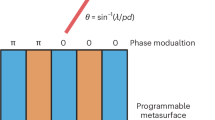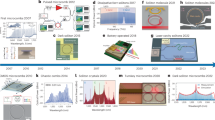Abstract
IT has frequently been noted that in long-distance high-frequency communication the actual maximum usable frequency (MUF) may be as much as 40 per cent greater than would be predicted from vertical soundings. One explanation for this has been given by Warren and Hogg1, who showed, by means of an oblique incidence ionogram, that single-hop propagation could occur on a transmission path of 5,300 km, whereupon the resultant MUF exceeds that predicted by a two-hop mode calculation. A calculation by Kift2 gives good agreement with this experimental result. The possible occurrence of layer tilts and M and N reflexions has also been advanced to account for the high MUF's obtained in practice3,4.
This is a preview of subscription content, access via your institution
Access options
Similar content being viewed by others
References
Warren, E., and Hogg, E. L., Nature, 181, 34 (1958).
Kift, F., Nature, 181, 1459 (1958).
Stein, S., J. Geophys. Res., 63, 217 (1958).
Silberstein, R., J. Geophys. Res., 63, 445 (1958).
Author information
Authors and Affiliations
Rights and permissions
About this article
Cite this article
WILLIAMS, H. Increase in Maximum Usable Frequency for Two-hop Transatlantic Propagation due to Horizontal Gradients. Nature 196, 256–258 (1962). https://doi.org/10.1038/196256b0
Issue date:
DOI: https://doi.org/10.1038/196256b0



